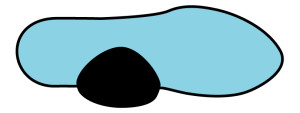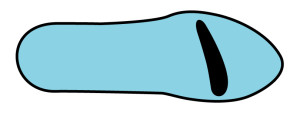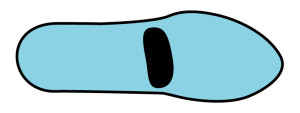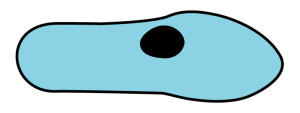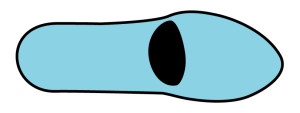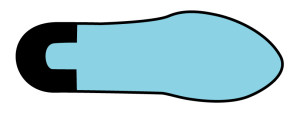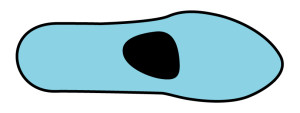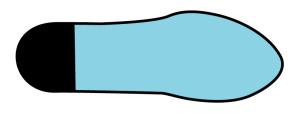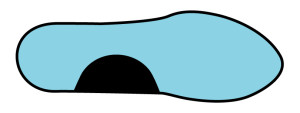The purpose of orthotics is to permit healing and correction of foot conditions that cause pain, discomfort and possible damage to the feet and other parts of the body. Foot orthotics help restore the ability to walk, run, and jump by reducing pain and swelling. They increase the stability of unstable joints and provide better arch support. They also ease problems in the back and hips. Benefits of orthotics also include improving the overall health of feet and ankles and aligning and supporting the body as well as preventing foot deformities.
Back problems and other common forms of chronic pain can often be traced to foot imbalance. Orthotics reposition the foot to optimize biomechanical function, reduce pain and possible injury.
For minor conditions, over-the-counter foot inserts may provide temporary relief. However, custom-manufactured foot orthotics are generally better at treating severe and prolonged conditions, especially since they are designed to the individual’s unique biomechanics. Examples of people for whom custom orthotics are often prescribed include:
- Those who must walk or stand long hours on the job
- Athletes and active individuals who seek increased endurance, performance and strength
- Overweight individuals who suffer from extra stress on the feet
- Older adults who have arthritic feet
- Children with foot deformities
The ways in which prescription foot orthotics differ from prefabricated alternatives become evident upon closer examination of the foot orthotic manufacturing process. There are many variations, each of which is designed to solve a specific problem or set of conditions. The greatest advantage that prescription foot orthotics provide is in the precise way in which they are tailored to the contour of the individual’s feet. Following are some of the various components that are used in making prescription orthotic devices:
Soft Medial Wing
soft medial wings are fully padded, breathable arch pad on the medial side of the foot that provides comfort and stability.
Toe Crest Pad
toe crests are crescent-shaped pads positioned behind the second, third and fourth phalanges. Toe crest pads are used to offset stress and fill in the void under the proximal phalanges.
Met Bar Pad
metatarsal pads, or met pads, are modification devices that shift the load away from the metatarsal head to the metatarsal shaft and surrounding tissue, thus providing stress relief from symptoms surrounding the metatarsal head.
Neuroma Pad
neuroma pad is designed to redirect pressure and thus mitigate pain in the soft tissue mass that forms on the nerve running between the metatarsals, known as the neuroma.
Dancer’s Pad
dancer’s pads are foot pads that offload pressure from the first metatarso-phalangeal joint (MPJ) and sesamoids, two pea-shaped bones located in the ball of the foot. The reason for the term “dancer’s pad” is because a dancer is usually performing on the ball of the foot, which has a tendency to become inflamed. Other individuals who use dancer’s pads are athletes and people who are required to stand for long periods of time.
Heel Spur Pad
heel spur pads, or liners, provide additional cushioning for the heel. Heel spur pads are particularly useful for individuals whose foot pain is caused by age-related shrinking of the heel’s fatty tissue. The heel spur pad supports sore heels, relieving pressure and pain caused by standing and walking on tiny calcium deposits that develop near the base of the heel bone.
Soft Heel
A soft heel is a very soft fill composed of silicone or soft tissue supplement in the heel of the orthotic. Soft heels provide a soft cushion that extends into the orthotic to alleviate pain from the calcaneus (usually caused by heel spurs).
2-4 Met Pad
metatarsal pads are used to redirect pressure and stress away from the metatarsal heads, commonly prescribed in cases of metatarsalgia.
;
Heel Cushion:
a heel cushion is a wedge of compressible rubber or rubber-like material that is built in for shock absorption during heel strike. It is also used to minimize excessive knee movement as it allows more rapid flexing of the ankle and plantar region. Customized heel pads are commonly used to treat plantar fasciitis which occurs in the tissue that connects the heel bone to the toes.
Scaphoid Pad
scaphoid pads support the joints and bones in the mid- and hind-feet.
Morton’s Extension
a Morton’s extension is a soft crepe extension often used for short first metatarsal. It is positioned under the first met head to raise the ground up to the foot. Morton’s extensions may also be made of rigid material for hallux rigidus or hallux limitus (stiff or arthritic big toe).
Neuroma Plug
a neuroma plug is a smaller, more targeted version of a neuroma pad designed to reduce pressure and pain on the metatarsal head as it shifts the impact to a larger area.

